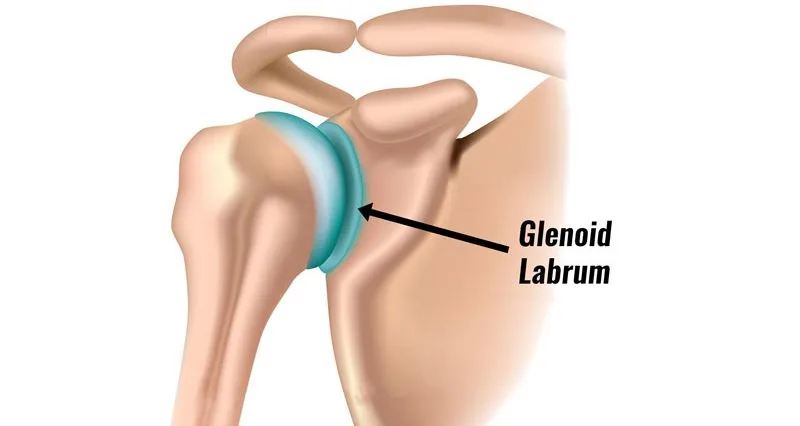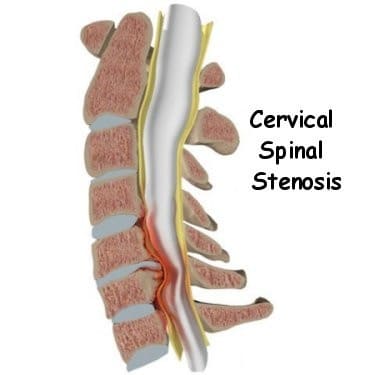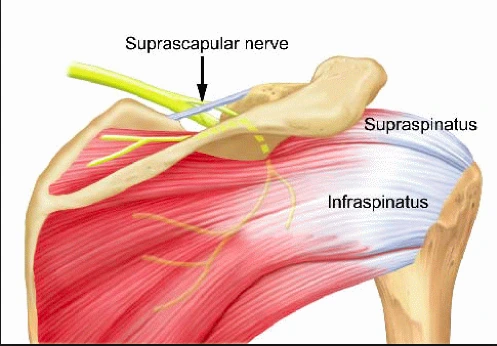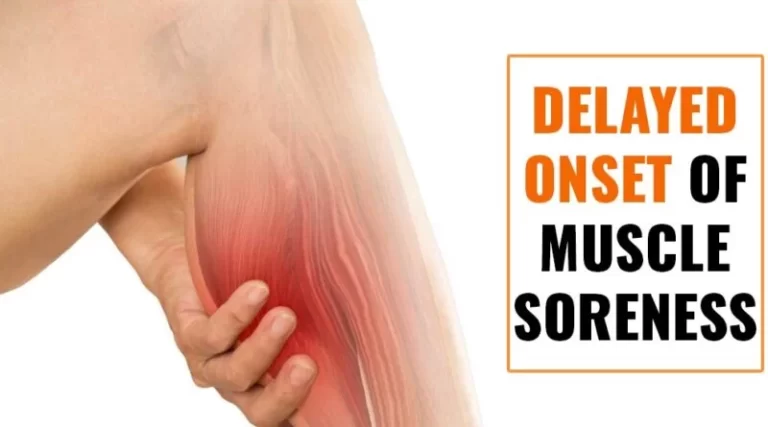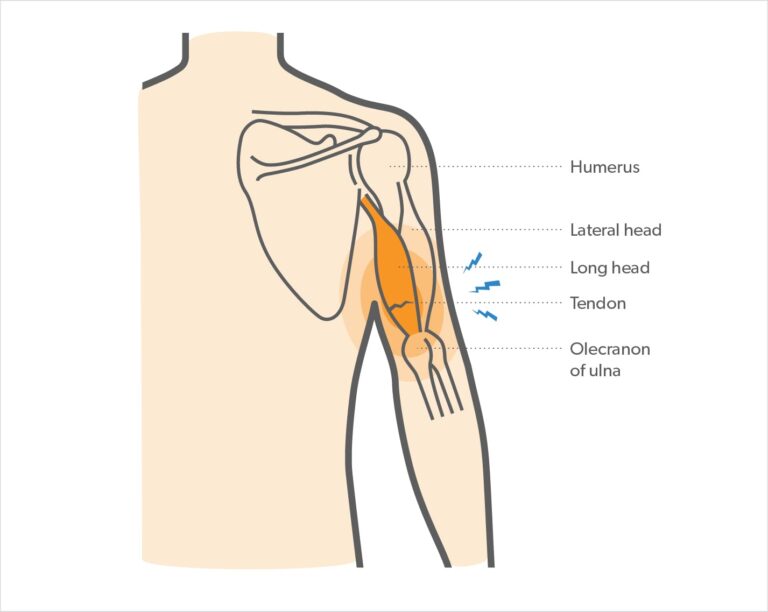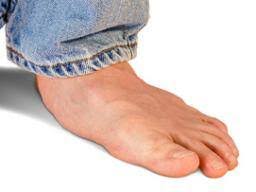Glenoid Labrum Tear
Table of Contents
What is a Glenoid Labrum Tear?
A glenoid labrum tear, also known as a labral tear, occurs when there is damage or a disruption in the fibrous tissue of the labrum. This injury can result from acute trauma, such as a fall or a forceful shoulder dislocation, or it may develop over time due to repetitive shoulder movements and activities commonly seen in athletes, especially those involved in overhead sports like baseball, swimming, or tennis.
The glenoid labrum is a crucial structure in the shoulder joint that plays a significant role in providing stability and support to the joint. It is a fibrous ring of cartilage located on the rim of the glenoid cavity of the scapula (shoulder blade), where the head of the humerus (upper arm bone) articulates to form the shoulder joint. The labrum deepens the glenoid cavity, increasing its surface area and enhancing the stability of the joint.
Glenoid labrum tears can cause a range of symptoms, including shoulder pain, limited range of motion, instability, and a feeling of “catching” or “locking” in the joint during movement. Diagnosing a labral tear typically involves a thorough physical examination, imaging studies such as MRI, and sometimes, arthroscopic exploration to visualize the extent of the injury.
In this article, we will explore the causes, symptoms, diagnosis, and treatment options for glenoid labrum tears, aiming to provide a comprehensive understanding of this common shoulder injury. It is essential to seek professional medical advice for an accurate diagnosis and personalized treatment plan tailored to each individual’s specific condition and needs.
Biomechanics
- Increases the contact surface between the head of the humerus and the scapula.
- Helping in the presentation of the “viscoelastic piston”. It is particularly effective against gravity.
- Provides placement as a fibrous “junction” to stabilize the structure.
Attachments
- above(superior): tendon of the long top of the biceps brachii
- Anterior: superior glenohumeral ligament; medial humeral ligament (variable)
- Inferior: Inferior glenohumeral ligament, consisting of the anterior ligament, axillary bursa, and posterior ligament
Causes of Glenoid Labrum Tear
The causes of a glenoid labrum tear can vary and may include:
- Traumatic injury: A direct blow to the shoulder, such as during a fall, car accident, or sports-related collision, can lead to a labrum tear.
- Repetitive overhead motions: Activities that involve repetitive overhead movements, like throwing in baseball or swimming, can put stress on the shoulder joint and potentially lead to labrum tears over time.
- Shoulder dislocation: A sudden dislocation of the shoulder joint can cause damage to the glenoid labrum.
- Degenerative changes: With age, the labrum can naturally undergo wear and tear, making it more susceptible to tears.
- SLAP (Superior Labrum Anterior to Posterior) tears: This specific type of labrum tear affects the top part of the shoulder socket and is often seen in athletes involved in overhead sports.
- Shoulder impingement: When the space between the shoulder blade and the upper arm is reduced, it can lead to increased pressure on the labrum, potentially causing tears. It’s important to note that each case is unique, and multiple factors can contribute to a glenoid labrum tear.
Symptoms of Glenoid Labrum Tear
The symptoms of a glenoid labrum tear can vary depending on the severity and location of the tear. Common symptoms may include:
- Shoulder pain: Persistent pain deep within the shoulder joint, which can be sharp or aching in nature, is a common symptom.
- Shoulder instability: You may experience a feeling of shoulder weakness or that the shoulder is “slipping” or “catching” during movement.
- Limited range of motion: Difficulty in moving the shoulder fully or pain when reaching overhead or behind the back.
- Clicking or popping sensations: You might hear or feel clicking, popping, or grinding sounds in the shoulder during certain movements.
- Weakness in the arm: A labrum tear can lead to weakness in the affected arm, making it challenging to perform certain tasks.
- Pain with specific movements: Pain may worsen with activities involving overhead motions, throwing, lifting heavy objects, or performing certain sports-related actions.
- Shoulder stiffness: The shoulder joint may feel stiff or locked, affecting everyday activities. It’s important to remember that these symptoms can also be indicative of other shoulder-related issues, so it’s crucial to seek evaluation from a qualified healthcare professional.
Diagnosis
They can perform physical examinations, imaging tests (like MRI or CT scan), and other diagnostic measures to determine if a glenoid labrum tear is the cause of your symptoms and recommend the appropriate treatment plan.
Imaging tests: To confirm the presence of a glenoid labrum tear and assess its severity, the doctor may order one or more of the following imaging tests:
- MRI (Magnetic Resonance Imaging): It provides detailed images of soft tissues, including the labrum and other structures in the shoulder joint.
- CT scan (Computed Tomography): It can be used to obtain more detailed images and assess bony abnormalities.
- X-rays: Though not the primary method for diagnosing labrum tears, X-rays can help rule out other shoulder problems or conditions.
- Physical examination: The doctor will conduct a thorough examination of your shoulder, checking for areas of tenderness, range of motion, and any signs of instability or weakness.
Differential Diagnosis
- Rotator cuff tear: This involves damage to the muscles and tendons that surround the shoulder joint. Both rotator cuff tears and labrum tears can cause shoulder pain, weakness, and limited range of motion.
- Biceps tendonitis: Inflammation or irritation of the biceps tendon can lead to shoulder pain and can sometimes be mistaken for a labrum tear.
- Shoulder impingement syndrome: This condition occurs when the space between the acromion (part of the shoulder blade) and the rotator cuff narrows, causing pain and limited shoulder movement.
- Frozen shoulder (adhesive capsulitis): This condition is characterized by shoulder stiffness and reduced range of motion due to the thickening and tightening of the joint capsule.
- Osteoarthritis: Shoulder arthritis can cause pain, stiffness, and reduced joint function. Osteoarthritis disease is mostly seen in older people.
- SLAP (Superior Labrum Anterior to Posterior) lesion: While also involving the labrum, SLAP tears specifically affect the top part of the shoulder socket and are often seen in athletes involved in overhead sports.
- Cervical spine (neck) issues: Nerve impingement or cervical spine problems can sometimes cause shoulder pain that can be mistaken for a labrum tear.
- Referred pain: Pain originating from other areas of the body, such as the neck or upper back, can be felt in the shoulder, leading to a misdiagnosis.
- To differentiate between these conditions and properly diagnose a glenoid labrum tear, healthcare professionals rely on a combination of patient history, physical examination, imaging tests (MRI, CT scan, X-rays), and sometimes diagnostic injections. This comprehensive approach helps ensure an accurate diagnosis and appropriate treatment plan tailored to the individual’s needs. If you experience shoulder pain or related symptoms, it’s essential to consult with a healthcare professional for a proper evaluation.
Treatment of Glenoid Labrum Tear
Treatment options for a glenoid labrum tear depend on various factors, including the severity of the tear, the patient’s age, activity level, and overall health. Non-surgical approaches may include rest, physical therapy, and anti-inflammatory medications. However, in more severe cases or when conservative treatments fail to provide relief, surgical intervention, such as arthroscopic labral repair or reconstruction, may be necessary to address the tear and restore shoulder stability.
Medical Treatment
- Nonsteroidal anti-inflammatory drugs (NSAIDs): Medications like ibuprofen or naproxen may help reduce pain and inflammation.
- Corticosteroid injections: In some cases, a doctor may administer corticosteroid injections into the shoulder joint to reduce inflammation and alleviate pain temporarily.
- Regenerative therapies: Treatments like Platelet-Rich Plasma (PRP) injections may be considered to promote healing and tissue repair.
Physiotherapy Treatment
Physiotherapy plays a crucial role in the treatment and rehabilitation of a glenoid labrum tear. The goals of physiotherapy are to reduce pain, improve shoulder function, and strengthen the surrounding muscles to support the injured shoulder.
- Pain management: Physiotherapists may use various methods such as ice therapy or heat therapy, ultrasound, or electrical stimulation to help decrease aches and inflammation in the shoulder joint.
- Range of motion exercises: Gentle exercises are prescribed to improve the shoulder’s range of motion and prevent stiffness.
- Strengthening exercises: Specific exercises are designed to target the muscles surrounding the shoulder joint, including the rotator cuff muscles, deltoids, and scapular stabilizers. Strengthening these muscles can help stabilize the shoulder and support the labrum during movement.
- Proprioceptive and stability training: Exercises that focus on improving the shoulder’s proprioception (awareness of joint position) and stability help enhance shoulder control and prevent re-injury.
- Functional training: As the shoulder improves, physiotherapists incorporate functional movements and activities that simulate real-life tasks to help patients regain their normal function.
- Posture correction: Proper posture is emphasized to reduce stress on the shoulder joint and promote better alignment during daily activities.
Exercise
If you have a glenoid labrum tear or suspect such an injury, it’s essential to be cautious with exercises and always follow the advice of your healthcare professional or physiotherapist. They can recommend specific exercises based on the severity of the tear and your individual needs. However, here are some general exercises that may be included in a physiotherapy program for a glenoid labrum tear:
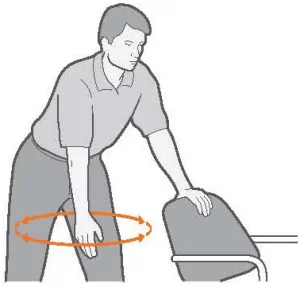
- Pendulum exercises: gently bend at the waist area and let the arm hang. Using your body to start moving, gently move your hand back and forth in a circular motion.
- External rotation at 90º abduction stretch: Lie on the patient’s back. Support the upper arm if necessary towels or a small pillow. Keep the patient’s arms at a 90-degree angle body and elbow bent 90 degrees. Using a stick the opposite hand extends like a thumb to take in the corner of the table next to the ear. wait 10 seconds and then return to the starting position.
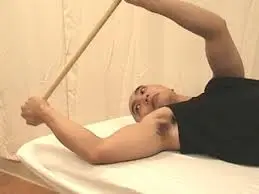
Strengthening of Theraband
These resistance activities should be done very slowly in both directions. We want to empower you throughout the movement and everything very important that these exercises are done very slowly, not only when you perform the exercise (center), but also on the way back starting position (eccentric). The slower the movement, the maximum contraction throughout the movement.
External rotation:
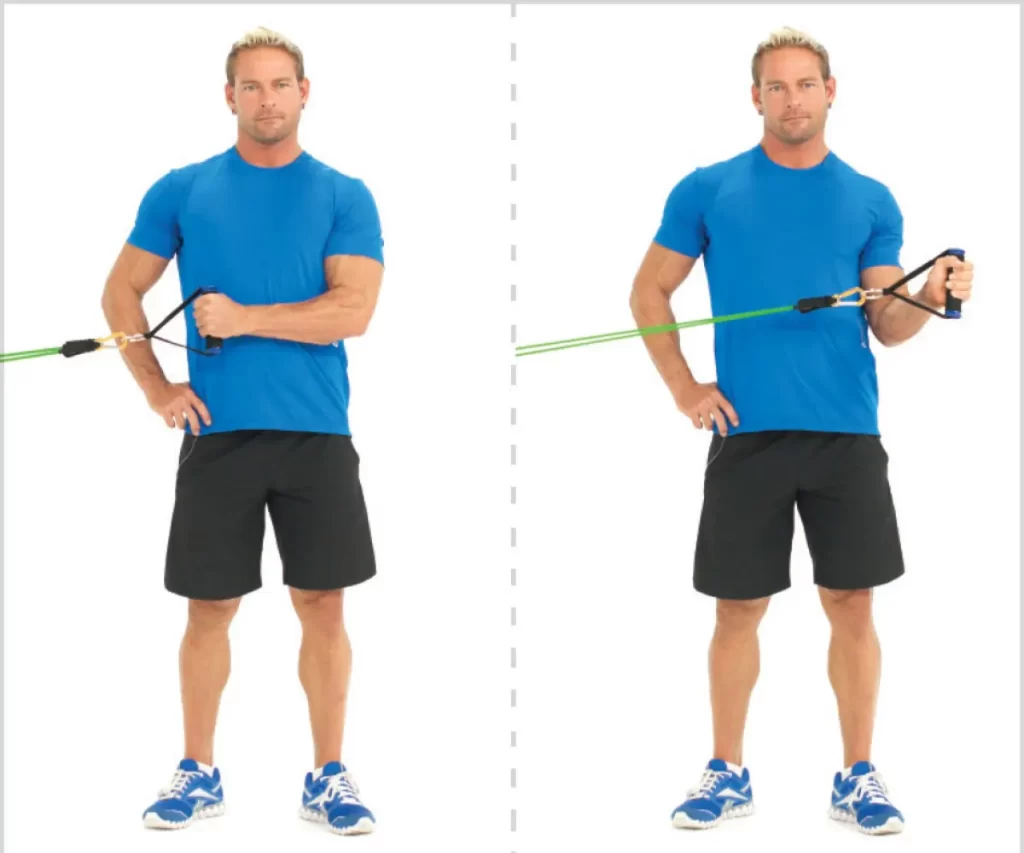
- Attach the strap to a doorknob or something at waist height. Standing sideways position to the door and looking straight ahead go ahead, take the other end of the tape, and pull everything off the tape through until it is tight. The feet are shoulder-width apart stand apart and the knees are slightly bent. The elbow is placed manually as close to the page as possible to your chest as much as possible (think about that elbow attached to the hinge). Take the wire in your hand and move its arms away from the body as comfortably as possible. Return to the starting position
- Passive range of motion exercises: Using the opposite arm or assistance from a physiotherapist to move the affected arm through its full range of motion.
- Isometric exercises: Contracting the shoulder muscles without actually moving the joint, which helps build strength without putting excessive stress on the injured area.
Shoulder Shrug
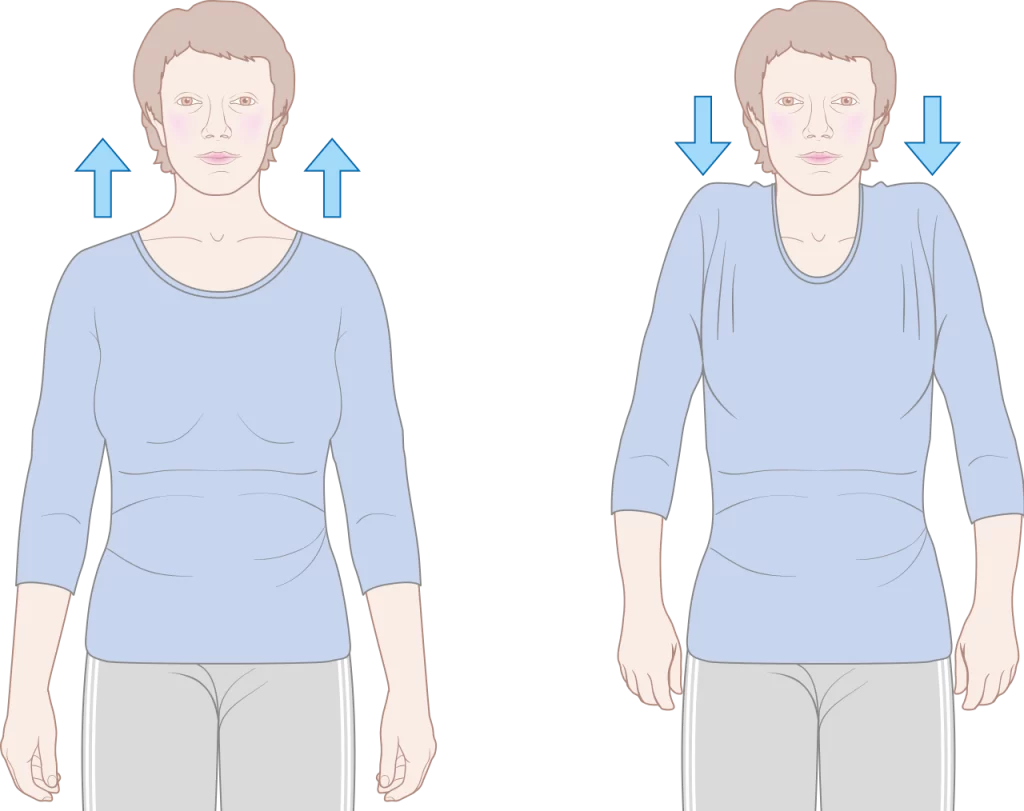
- Stand or sit in a comfortable position. As the patient inhales, pull both shoulders toward your ear side, then exhale, releasing your shoulders to a neutral position. Repeat 10 times.
- Scapular stabilization exercises: Strengthening the muscles around the shoulder blades to improve stability and control.
Scapular setting
Scapular setting exercise strengthens the middle trapezius and pectoral muscles. You should lie face down keep your hands on your chest, then gently contract your shoulders and down your back as far as possible hold it. hold this position for about ten seconds and relax. Repeat this about eight or ten times.
Scapula Retraction
Scapula retraction exercise also strengthens the middle trapezius and trapezius muscles. You should use weights that work for you and ideally increase the weight in 1-pound increments up to a maximum of 5 pounds. Lie face down on the bed or on the table, holding the injured arm hanging over the side. Keep your elbow straight and lift the weight with a slow squeeze scapula as far as possible to the opposite side and then slowly return to the starting position.
- Rotator cuff strengthening: Exercises that target the rotator cuff muscles to improve shoulder stability and function.
Standing Row
Standing row exercise works the middle and lower trapezius muscles. To do this, you need a flexible elastic band special exercise Make a 2.5-3 foot loop with the rubber band. Tie the ends together, and fasten the loop to the solid and stable object. Keeping the elbow bent at the side, hold the strap and pull the arm from the elbow to the side straight back Slowly return to the starting position and repeat at least two sets of 10 on each arm.
Internal Rotation
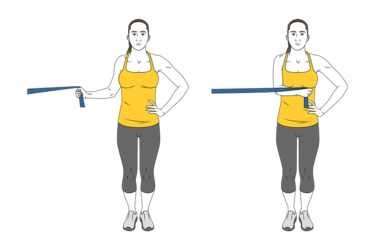
- This helps achieve a stretch at the base of the scapula and also stretches the pectoral muscle. You need an elastic band for this exercise. Make a 2.5-3 foot loop with the rubber band. Tie your heads together and fasten the loop to a solid and stable object. Keeping the elbow bent and pressed to the side, hold the strap and hand place your arms close to your side, and cross your arms.
External rotation with bands
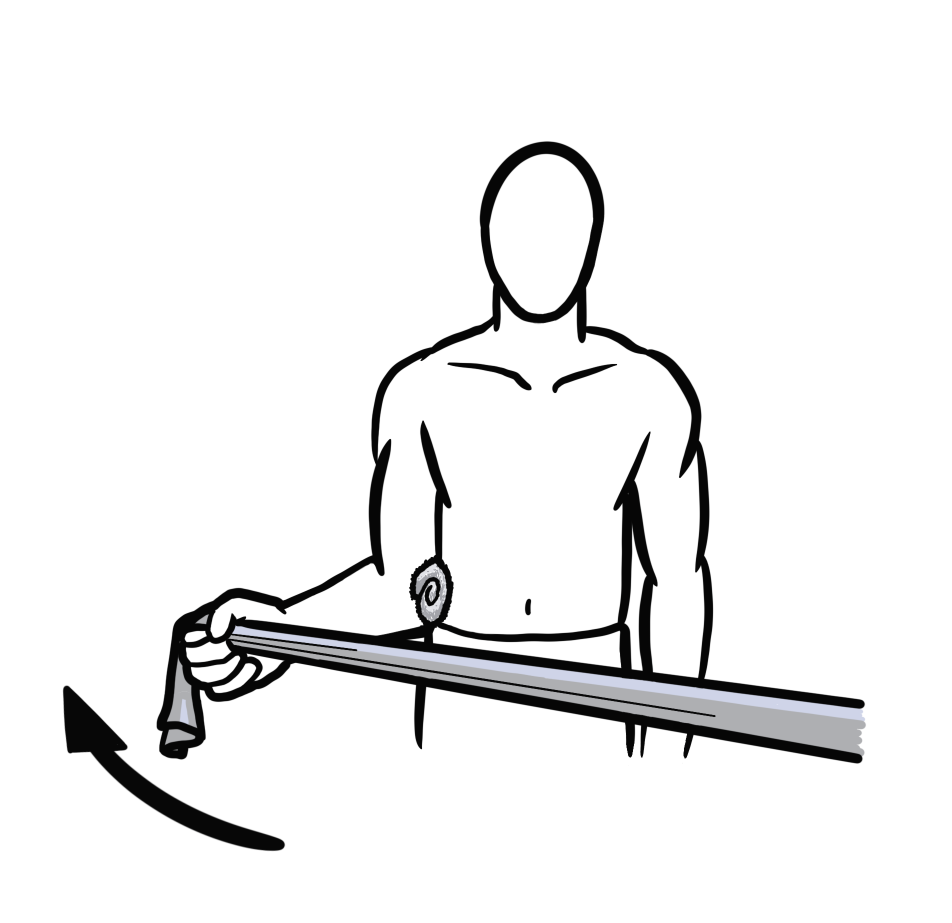
- This works to stretch the infraspinatus and also stretches the teres minor and posterior deltoid muscles. For this exercise, you will need a flexible resistance band. Make a 2.5-3 foot loop with the rubber band. tie the ends together, and tie the loop to a solid and stable object. Keep your elbows bent and close to your side, slowly rotate your arm outward, then return to the starting position, doing at least two sets of 10 on each arm.
- Shoulder flexion and abduction exercises: Gradual strengthening exercises to work on raising the arm forward and sideways.
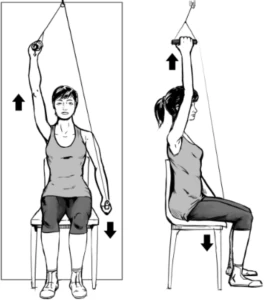
- Rows and pulleys: Exercises using resistance bands or pulleys to work on shoulder strength and stability.
- Functional exercises: Incorporating movements that mimic daily activities or sports-specific actions once the shoulder has healed sufficiently. Remember to perform exercises within your pain tolerance and avoid any movements that cause discomfort or exacerbate your symptoms.
- Gradual return to activities: Physiotherapists work with patients to gradually reintroduce sports or activities, ensuring the shoulder is strong and stable enough to handle the demands.
- Education and home exercises: Patients are provided with education about the injury, proper body mechanics, and a home exercise program to continue progress outside of physiotherapy sessions.
Surgical Treatment
Surgical treatment for a glenoid labrum tear may be considered when conservative approaches (such as rest, physical therapy, and medication) have not provided sufficient relief, or in cases of severe or complex tears. The surgical procedure aims to repair or reconstruct the torn labrum and stabilize the shoulder joint. There are 2 primary surgical methods for treating glenoid labrum tears:
- Arthroscopic surgery: Arthroscopic surgery is a minimally invasive method that involves making small incisions in the shoulder joint and inserting a tiny camera (arthroscope) to visualize the joint’s interior. The surgeon uses specialized instruments to repair or trim the torn labrum. Arthroscopic surgery is generally preferred as it offers shorter recovery times, less post-operative pain, and smaller scars compared to open surgery.
- Open surgery: In certain cases, a larger incision is made in the shoulder to directly access and repair the damaged labrum. Open surgery is typically reserved for more complex cases or if the surgeon needs better access to the shoulder joint.
Summary
A glenoid labrum tear is a common shoulder injury involving the fibrous ring of cartilage in the shoulder joint. It can result from acute trauma or repetitive shoulder movements. Symptoms include shoulder pain, limited range of motion, and instability. Diagnosis involves physical examination and imaging studies. Rest, physical therapy, and surgery are all possible forms of treatment. Seeking professional medical advice is crucial for accurate diagnosis and personalized treatment.
FAQs
The glenoid labrum is the fibrocartilaginous tissue in the glenoid cavity of the shoulder joint. The purpose of the glenoid labrum is to provide joint stability and shock absorption.
The head of the humerus (humerus) rests in a shallow depression in the shoulder blades called the glenoid. The head of the humerus is generally more bigger than the socket joint, and a rim of soft tissue known as the labrum around the socket stabilizes the joint.
The rim deepens the groove up to 50%, so the humeral head fits better. In addition, it serves as a connection point for several bandages. The labrum deepens the recesses of the shoulder joint, making it stronger on the head
Pain, usually with overhead activities.
Catching, locking, popping, or grinding.
Occasional night ache or ache with daily activities.
A sense of instability in the shoulder area.
Decreased range of motion.
Loss of strength.
Activity modification.
Anti-inflammatory medication.
Corticosteroid injection into the shoulder joint.
Icing or applying heat to the shoulder area.
Range-of-motion exercises/physical therapy.

